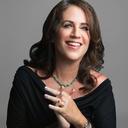
We’re learning and adjusting to new ways of shooting during the COVID-19 pandemic every single day. As production has started up around the world, I’m seeing some amazing work being created under very difficult circumstances. One example of this is Freeform’s miniseries “Love in the Time of Corona,” which aired all four episodes in August. I spoke to producer Christine Sacani (“The Sisterhood of the Traveling Pants,” “Good Trouble”) about mounting a show like this in such unprecedented times.
What were the biggest obstacles you faced in producing this series during a global pandemic?
The safety committees and task forces analyzed our plan from every angle, and together we came to a safe and acceptable way to move forward. This meant paring down, shifting gears, paring down again, and modifying where needed. As a reminder, there was not a film industry white paper yet, so we were essentially taking the CDC’s greatest hits and reviewing them with doctors and lawyers to figure out safe protocols for our small team of filmmakers. So, really, the whole process, from conception to planning to execution, was a series of “obstacles in” and “solutions out.”
Since film people are, by nature, a collaborative and close-working, touchy-feely group of people, finding a new virtual and distanced working rhythm was the most challenging shift.
What should actors know to keep themselves safe during production?
There was no physical contact with cast members other than with their quarantine buddies (the other actors). They never left their home, and we never entered their home when they were in it. On the rare occasion that a cast member stepped outside—as in the case of Gil Bellows, who came out to walk his dog during filming—he would wear a mask and stay 8–10 feet from any crew member. That was the No. 1 goal when we conceived the show: All actors will be quarantining together, and no crew would come in contact with them, so the actors were safe at all times. Going forward with the bigger show, “Good Trouble,” this answer gets a bit more complicated. We are back to the normal filmmaking routines of an actor getting makeup, hair, and costumes done by a team of professionals with an on-set crew of 50+ watching rehearsals, lighting, and shooting. Now, the question needs to be answered differently. We have broken down the crew into A, B, and C zone groups.
The A zone crew gets tested three times per week and needs to wear a mask and face shield at all times when on set. The B zone crew cannot be on set with the cast. The C zone crew never goes to set. The cast members are considered A zone, get tested three times per week, and wear masks at all times—except when the camera is rolling. There are wipes and hand-washing stations for everyone. We have safety monitors on set confirming that everyone is in proper Disney-approved PPE and reminding people to keep a safe distance from each other. When a cast member comes to set, they come camera-ready. If they need a touch-up, they have their own little makeup bag on set to add a little powder or reapply their lip. The makeup, hair, and costume crew will be watching a monitor just off set to ensure continuity is good. Unless there is an obvious issue or reset, these departments do not come to set between camera setups. All of this is to mitigate the numbers of people interacting with cast when they are not in PPE.
The one thing that is difficult to monitor is cast activity when they are not at work. Bottom line: If we all continue to follow the three simple rules—wear a mask, wash our hands, and stay a minimum of 6–8 feet away from others—we will continue to be safe.
Do you feel that the pace of how fast or slow the day goes has significantly changed due to hand-washing breaks, etc?
The pace is just sort of different. Where we are saving time by not doing touch-ups after every setup, we are losing by having crew work in A zone and B zone shifts. The shortened shooting day—mainly to compensate for what I call “mask fatigue” and the general need to just stop working—has caused us to add a half to a full day of shooting for each episode.
Another shift in the pace of the day is around food. Our craft service team can no longer set out an all-day buffet for grazing, and cast and crew can no longer bring that food onto set and eat while they are working. Food needs to be eaten outside, socially distanced. We have implemented a “refreshment stand” food retrieval. If a crew member wants a donut or a cup of coffee, they go order it at the craft service truck [and] find a place nearby to take their mask off and eat it. Clearly, this system makes it difficult for some people to get away for water or food, and we are working on that. Lunch is now being served over a three-hour period, and we are staggering the crew break times to ensure a shorter wait time for getting meals and fewer people eating in the outdoor lunch area. The catering has changed as well, in that each person individually orders what they’d like, and a plate is made and handed off to them.
This story originally appeared in the Nov. 5 issue of Backstage Magazine. Subscribe here.
Looking for remote work? Backstage has got you covered! Click here for auditions you can do from home!
 COVID-19 Resources for Actors, Performers, and Creators
COVID-19 Resources for Actors, Performers, and Creators  COVID-19 Has Taught This Casting Director That All Actors Need a Plan B
COVID-19 Has Taught This Casting Director That All Actors Need a Plan B 